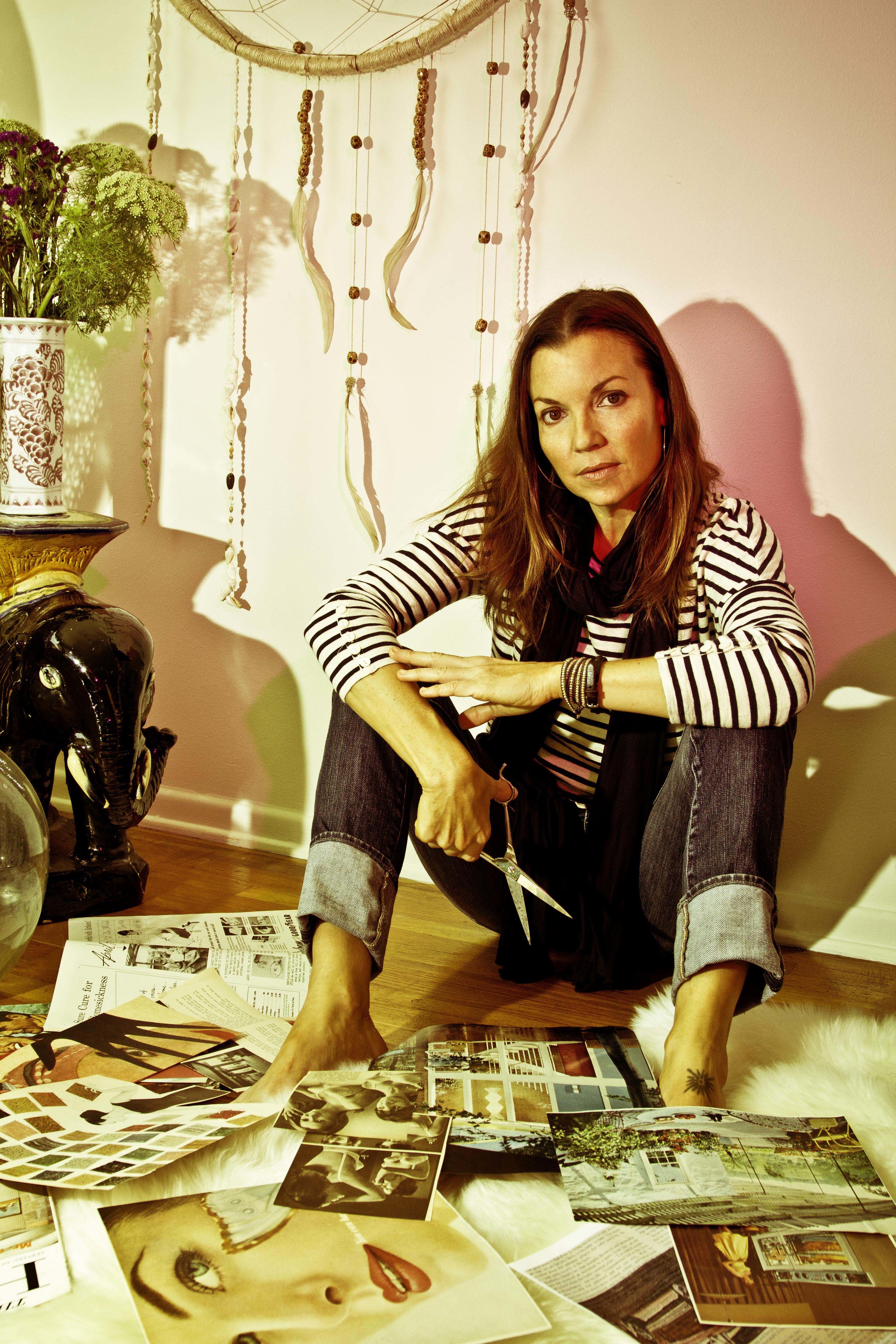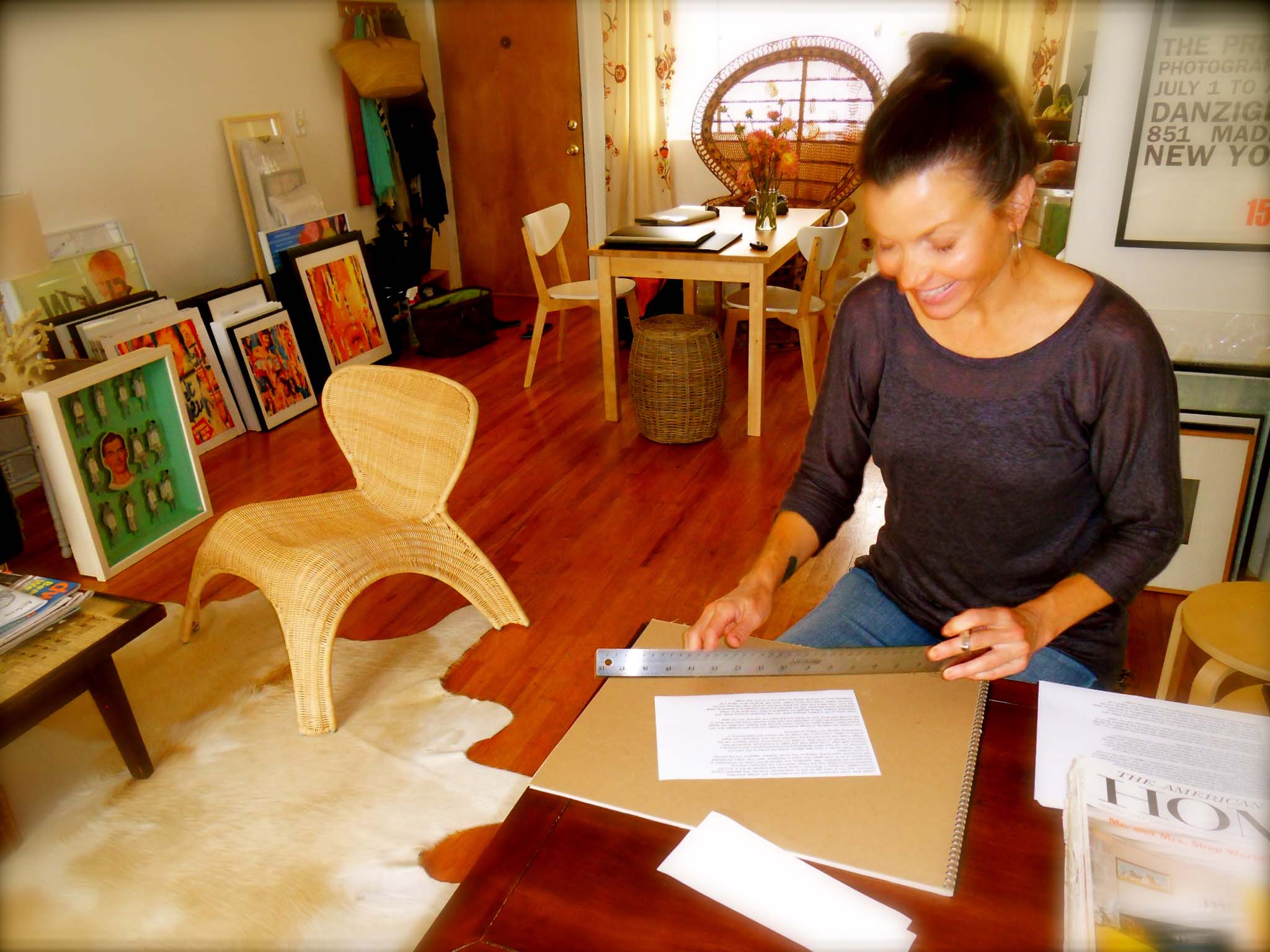It can be difficult to grasp the beauty of the American Southwest, but Art Unified artist Susan Haynsworth's dreamy, ephemeral collages provide sufficient explanation. Her love of collage began in childhood, and has followed her around the world. Haynsworth manipulates images inspired by dreams, ephemera, natural environments and Americana, cutting them up and massaging them into artworks whose final effects are much greater than the sum of their parts. Like the dreams they're inspired by, Haynsworth's work prompts its viewers to lean in, listen for its whisper and take a closer look. We're stoked to do the same here for this sojourning artist, as she talks to us about Bauhaus, her pet rabbit Boo Radley, and getting caught doodling in class, in this week's installment of Inside the Artist's Studio.
"Many of the innovators of Los Angeles have inspired me, from Charles and Ray Eames to the Z-Boys."
Art Unified: Where did you gather inspiration for your latest work of art?
Susan Haynsworth: I get a lot of inspiration from the environment that I'm living in: the design, colors, architecture, people, and energy on the street, is all reflected in my art. I often use female imagery, and incorporate my love of the sea and travel. The constant in my art has always been the use of vintage ephemera and the use of color, whether I was living in New Mexico, Hawaii, or California.
AU: What materials do you use to make your art? What about those materials made you choose them over others?
SH: Ever since I was a child, I've loved collage. Whenever I see it, it still captivates me. Some of my original influences were from the Bauhaus and Dada movements, and I loved the way these artists used image and design together. Since my father was a graphic designer, I grew up studying magazine images and advertising. I collect vintage magazines, and find them to be an amazing combination of Western culture and fantasy. I began using them years ago in collage-assemblage box constructions that I built out of wood, but eventually transitioned to working on paper. Over time, the use of color has become more important in my art.
AU: What about Southern California made you decide to create you work here?
SH: As a visual person, light and color have a huge influence on my work. The arid, coastal climate of Southern California creates an ideal environment for many artists, and it's history of being an experimental place for architects, painters, designers, and musicians is huge. Creative people have always felt that it was a good place to try something new, be it skateboarding, natural food, surfing, spirituality, or art. Many of the innovators of Los Angeles have inspired me, from Charles and Ray Eames to the Z-Boys.
"They're two of the few places in this country that embrace free thinking, experimentation, and raw creativity."
AU: What's your favorite or most inspirational place in Southern California?
SH: I lived in Taos, New Mexico for many years before moving to Santa Monica. I was aware that there was a major connection between Taos and Venice, California, and felt an affinity with it. Some well known creative Taos residents such as Larry Bell, Dennis Hopper, Ken Price, and others, spent time in both places. Taos and Venice are very different, but are kindred spirits and complementary opposites. They're two of the few places in this country that embrace free thinking, experimentation, and raw creativity.
AU: Describe the turning point in your life that made you realize you were an artist?
SH: Because my father was an artist, I was fortunate to grow up seeing someone make their living this way. I had a friend at my university whose parents practically disowned him because he decided to go to art school, and had made an "impractical" choice for a vocation. I was encouraged on this path, and always believed it was possible. Getting recognition from the outside world by selling work and exhibiting can be validating to an artist's self worth, which historically is known to be challenged by the fact that art isn't always supported in our culture. A few events early on, such as the acceptance into a juried photography exhibition and winning a cash award in a poster design competition while still in art school, raised my confidence, and 20 years ago I sold my first assemblage to a collector in Taos. While it's very important to make art for art's sake, getting paid for your creativity makes all the difference between being able to do art full time, and doing it between other jobs.
AU: Are there aspects of the art world that you do not approve of? Did any of those aspects lead you to move toward Art Unified?
SH: The art world has changed dramatically in recent years, and the internet has made it possible for artists to be more autonomous, and not necessarily have to rely on galleries. However, I think it's also important to have art out in the world for people to experience in person. Only a very small percentage of the population makes it into galleries, but if art is in a café, bank, shopping area, office building, or airport, a much larger and diverse audience gets to see it. Art Unified gets the artist's work out into the world, and into places where it can get wider exposure. This is not only good for the artist, but also for the businesses themselves: having art in our environment benefits everyone.
AU: What has your experience been with Art Unified? How did you get involved?
SH: A photographer friend of mine in Venice encouraged me to submit my work to Art Unified. I really liked their concept for getting artist's work in public spaces; it's something I've been interested in for a long time, as it's often the missing link between art and people. I've had great experiences with the AU, showing once in Downtown LA, and again at a large home decor retailer in Santa Monica. In both cases, people that I knew commented that they had seem the work there, and I also know that a large cross section of the public, who might not have otherwise, saw them as well.
AU: What is your studio or preferred place of work? What is it like working there? Do you have any particular habits when you work?
SH: I work from home in Santa Monica, which I love because I can get into the studio whenever I like without having to go far. I tend to be pretty tidy, but when I'm working on art, I lay my images out all over the room so that I can see them together and choose the ones I want to use for a particular collage. After the scissor cutting begins, the floor becomes covered with scraps of paper! I like that I can walk away from it periodically into my more Zen living space. Because I collect magazines for my work, my studio is filled with them, and I like to refer to it as my "image "bank". This is the only part of my house that I allow to be cluttered, though: I keep the rest simple to allow my mind to be free. Music also provides inspiration while I'm working, as does my pet rabbit, Boo Radley.
"Only a very small percentage of the population makes it into galleries, but if art is in a café, shopping area, or airport, a much larger and diverse audience gets to see it."
AU: What is one of your favorite quotes or piece of advice you have been given towards being an artist?
SH: "I've been terrified every moment of my life - and I've never let it keep me from doing a single thing I wanted to do." Georgia O'Keefe


